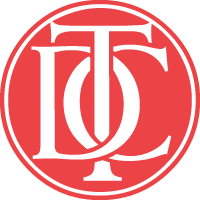Exhibition on Ernst Reichl, Type Director and Book Designer
“What is a type director?” ask younger members of the TDC. It is a title that has largely disappeared, the name for the member of a creative team who chose or made type and lettering for publishing and advertising. It suggests typographic expertise and sensitivity, the ability to choose the right letter for the job.
The work of a one-time holder of the type director title, Ernst Reichl (1900–1980), is on view in the gallery of the Rare Book and Manuscripts Library at Columbia University, in an exhibition called Ernst Reichl: Wide Awake Typographer. Reichl was officially a type director while at the advertising agency Foote, Cone & Belding in the middle of the 1940s; this exhibition showcases his work in book design, the typography of publishing that occupied most of his career.
Rows of book covers and spreads fill the gallery cases, examples of Reichl’s designs for Knopf, Random House, Holt Rinehart & Winston, and others, as well as examples of his commissions for famous authors such as Gertrude Stein and Joyce Carol Oates, children’s books, and work honored by the AIGA 50 Books competition. Reichl’s hand-drawn mockups of his most famous book and jacket design — for the 1934 Random House issue of Ulysses — are there, alongside spreads from the printed book, open to the typographically dramatic chapter openers.

A bit of publishing humor — For the book Storm, Reichl modified the famous Random House logo so that its clouds are swept away by wind.
Accompanying the books are surprising notes by Reichl that are as interesting as the work. It is these annotations that inspired historian Martha Scotford to curate this exhibition, and they are the primary reason to visit the show. The Reichl archive at Columbia holds around 550 index cards on which Reichl recorded details of the commissions and his appraisal of the designs, as well as of his clients and collaborators. He is sharp and funny, uninhibited in judging himself and others. For instance, he writes of the 1960 book How to Write Ten Different Best Sellers NOW,
“Why is a book that’s so much fun to do hardly ever a success? The designer [Reichl] pulled every trick he knew, he even made a comma with a bird on it for a type face that had no comma — but the book laid an egg.”
About the book Elegy in Manhattan, he wrote the verse:
“…The author of the Elegies
Must have been
A very sad man,
But not quite as sad
As the illustrator, whose name
Is mentioned nowhere.”
Reichl was a thorough and careful craftsman and wrote about a modest typewritten book he designed that “my concept of craftsmanship demands that every job be handled with equal care… one can give every publication the dignity it deserves, and its greatest effectiveness.” His work does not have the consistency of Paul Rand or other well-known modernists of his generation, but Reichl’s philosophy of work, as well as his rediscovered notes, show that he was paying attention.
Ernst Reichl: Wide Awake Typographer is on view at the Rare Book and Manuscript Library at Columbia University until September 13 (see it soon!).
TDC members are invited to a special event presented by the Friends of the Columbia Libraries, a talk by Martha Scotford, with Ruth Reichl (Ernst Reichl’s daughter and well-known food critic and author).
Wednesday, September 11, 6:00 p.m.
Butler Library, Room 523
Rare Book and Manuscript Library, Columbia University
535 West 114th Street, New York
(reception follows in the Kempner Gallery, Butler, 6th floor)
Please rsvp: cul-events@columbia.edu
Curator Martha Scotford will also be in the gallery for conversation and questions on Monday, September 9, from 6 to 8 p.m.
Columbia University
Rare Book and Manuscript Library
6th Floor East Butler Library
535 West 114th St.
212-854-5590
Doug Clouse




